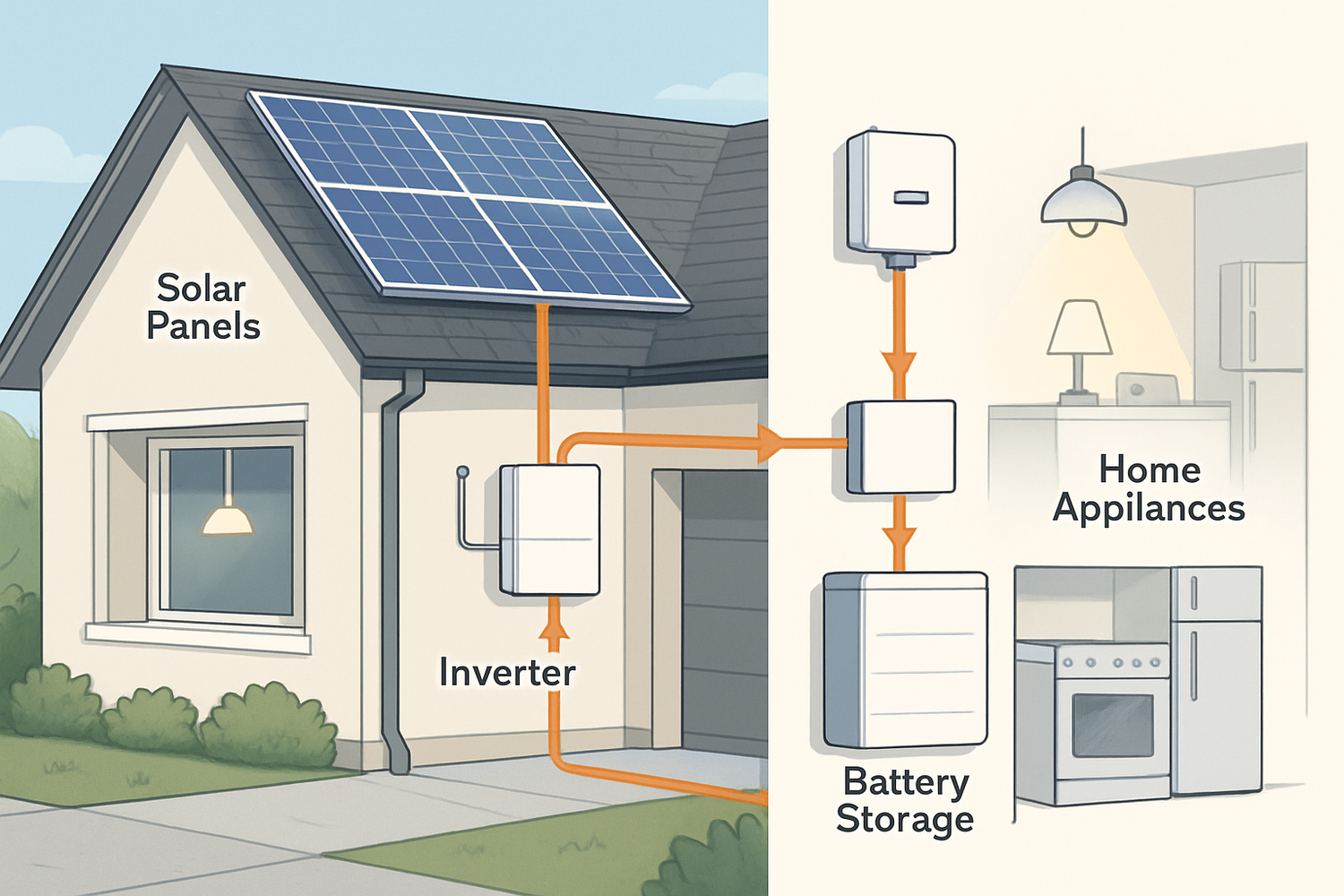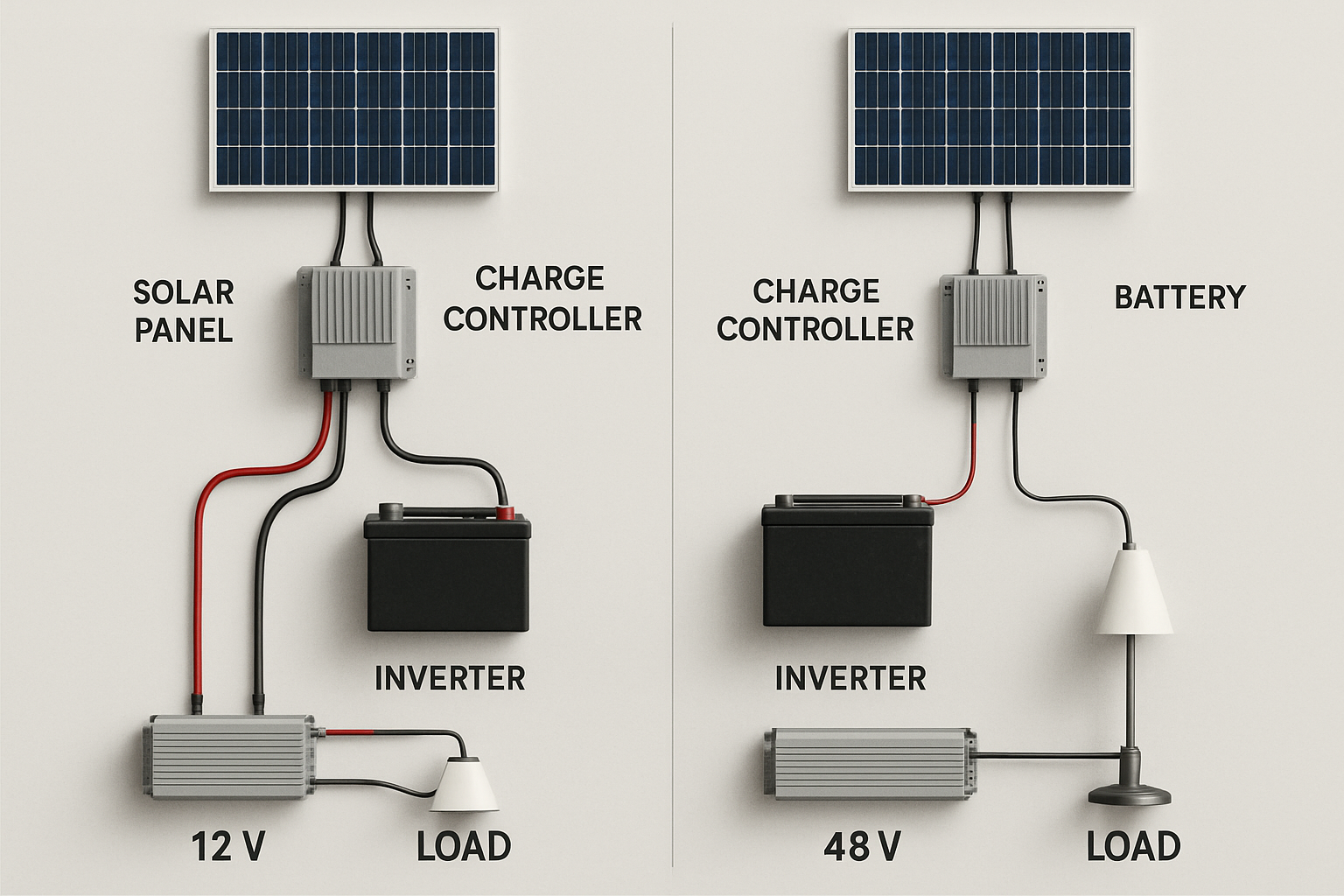Adding solar panels to your home is a significant step toward managing energy use. However, the panels only generate power when the sun is shining. A solar battery system changes this dynamic completely. It allows you to store the excess energy your panels produce during the day and use it whenever you need it, day or night. This capability moves you from simply being a power producer to having full control over your home's energy supply.
This guide provides a thorough look at the advantages and financial considerations of energy storage. We will cover how these systems work, what benefits they offer, how much they cost, and how to determine if one is the right fit for your home. The goal is to equip you with the knowledge to make a confident and informed decision about your energy future.
The Core Advantages of a Solar Battery System
A solar battery is more than just a power reservoir; it unlocks the full potential of your solar installation. By storing solar energy, you gain flexibility and resilience that solar panels alone cannot provide. These advantages range from financial savings to complete energy security.
Achieving Energy Independence
One of the most compelling reasons to invest in a solar battery is the pursuit of energy independence. With a storage system, your reliance on the public utility grid diminishes significantly. During a power outage, a properly configured system can automatically switch over, keeping your essential appliances running without interruption. This provides peace of mind and ensures your home remains functional during grid failures. For those in remote locations, an off-grid solar solution with battery storage can provide reliable power where the grid doesn't reach. The International Renewable Energy Agency (IRENA) notes that battery storage systems are key to balancing variable resources like solar, enabling very high shares of renewable energy to be reached in mini-grids by decoupling electricity demand from VRE supply. You can Unlock Energy Independence with a 12V 100Ah LiFePO4 Battery and take direct control of your power.
Maximizing Your Solar Investment
Without a battery, any excess solar energy your panels generate is often sent back to the grid. A battery allows you to store this excess power for your own use later. This practice, known as self-consumption, is crucial for maximizing the value of your solar panels. You can power your home with clean solar energy in the evening, long after the sun has set. Furthermore, many utility companies have time-of-use (TOU) rates, where electricity costs more during peak demand hours (usually late afternoon and evening). A solar battery lets you avoid these high rates by using your stored, low-cost solar power instead. This strategy directly reduces your monthly electricity bills and accelerates the return on your investment. You can learn more about the Beyond Savings: Hidden Benefits of Energy Storage Solutions that contribute to your home's value.
Environmental Impact and Grid Support
By storing and using your own solar power, you reduce your household's reliance on electricity generated from fossil fuels. This directly lowers your carbon footprint and contributes to a cleaner environment. On a larger scale, homes with battery storage can also help stabilize the local grid. According to the U.S. Department of Energy, a major benefit of energy storage is the flexibility to control when power is exported to the grid. This capability can help reduce grid strain during peak demand periods, contributing to a more resilient and efficient energy infrastructure for the entire community.
Deconstructing the Cost of Solar Batteries
The initial investment is a primary consideration for anyone exploring a solar battery system. While prices have become more accessible, it's important to understand what factors influence the final cost. A clear view of the expenses helps in evaluating the long-term financial benefits and making a sound investment decision.
Key Factors Influencing Battery Prices
The total cost of solar batteries is determined by several interconnected factors:
- Battery Chemistry: The type of battery technology is a major cost driver. Lithium Iron Phosphate (LiFePO4) batteries are a leading choice for residential use due to their long lifespan, inherent safety, and high efficiency. They represent a reliable, long-term energy solution. You can explore a detailed comparison in our article on LiFePO4 vs. Lithium-Ion: Best 12V Deep Cycle Battery?.
- Capacity (kWh): This measures how much energy the battery can store. A larger capacity means you can power your home for longer during an outage or overnight, but it also comes with a higher price tag.
- Power Rating (kW): This indicates how many appliances the battery can run simultaneously. A higher power rating is needed for homes with large appliances like air conditioners or electric vehicle chargers.
- Brand and Warranty: Established manufacturers that offer robust, long-term warranties often have a higher initial cost, but this reflects a commitment to quality, reliability, and customer support.
- Installation: This includes labor, permitting, and any necessary additional components, such as a hybrid solar inverter that can manage power from solar panels, the battery, and the grid.
Understanding the Numbers: A 2025 Perspective
Battery costs have been steadily declining. While a 2016 report from the International Energy Agency (IEA) noted that prices started at around $550/kWh for large systems, the market has seen significant improvements since then. Today, the price is more favorable, making storage a viable option for more homeowners. It's also important to look past common misconceptions; you can read about them in 5 Myths About Lithium Battery Storage Costs & Lifespans.
To provide a general idea, here is a table of estimated costs for a complete LiFePO4 battery system installation in 2025. These figures are illustrative and can vary based on the factors mentioned above.
| System Size (Capacity) | Estimated Total Cost (Installed) | Best For |
|---|---|---|
| 5 - 7 kWh | $6,000 - $9,000 | Lowering peak-time energy bills, basic appliance backup |
| 10 - 14 kWh | $11,000 - $16,000 | Whole-home backup for essential loads, significant energy self-sufficiency |
| 15+ kWh | $17,000+ | Full off-grid capability, powering large homes with high energy use |
For more detailed pricing information, our The 2025 Guide to Lithium-Ion Solar Battery Prices offers an in-depth analysis. The trend of decreasing prices is expected to continue, as explained in Why Lithium-Ion Battery Prices Are Dropping: 2025 Analysis.
Incentives, Rebates, and Long-Term Value
Government incentives can substantially reduce the net cost of a solar battery. Programs like the federal Investment Tax Credit (ITC) in the United States, along with various state and local rebates, can lower your initial outlay. It is advisable to research the specific incentives available in your area. Viewing the purchase as a long-term investment in your home's infrastructure and energy security, rather than just an expense, is key to understanding its true value.
Is a Solar Battery Right for You? Making the Decision
Deciding to add a battery to your solar system requires careful consideration of your specific needs and goals. By evaluating your energy consumption, financial situation, and desire for resilience, you can determine if the benefits align with the investment. This section will help you navigate that decision-making process.
Sizing Your System for Maximum ROI
Properly sizing your energy storage system is critical. An undersized battery won't meet your needs during an outage, while an oversized one means you've spent money on capacity you'll never use. To find the right size, you should assess your average daily energy consumption, identify the essential appliances you want to back up, and determine your peak power demand. Our guide on How to Size Your Solar Energy Storage System for Max ROI provides a step-by-step process for this. ANERN offers scalable energy solutions, allowing you to start with a system that meets your current needs and expand it later if required.
Evaluating the Return on Investment (ROI)
The financial return on a solar battery comes from several areas: reduced electricity bills, avoidance of peak TOU rates, and potential compensation from utility grid-support programs. The value of uninterrupted power during an outage, while harder to quantify, is also a significant part of the return. To understand if a system is worthwhile, you should ask: Is a Home Battery Storage System Worth the Cost in 2025? A detailed financial analysis involves calculating your potential savings against the system's cost. To accurately project your ROI, you need to understand the performance metrics that define a battery's efficiency and longevity. A deeper look into these metrics can be found in our guide on solar storage performance. For those using LiFePO4 technology, our guide on Calculating ROI on Your Lithium Iron Phosphate Battery System offers specific insights.
Installation and Integration
Integrating a battery into your solar system involves connecting it to a hybrid inverter, which acts as the brain of the system, directing the flow of energy between your solar panels, battery, home, and the grid. A well-designed system, like an all-in-one Energy Storage System (ESS), simplifies this process by combining the battery, inverter, and management software into a single unit. This ensures all components work together seamlessly. The U.S. Department of Energy has supported initiatives like the BATRIES toolkit, which helps streamline the interconnection process for energy storage systems, making it easier and faster for homeowners to get their systems online.
Your Path to Energy Resilience
Adding a solar battery to your home is a definitive step toward energy resilience and independence. It transforms your solar panels from a part-time energy producer into a full-time power solution, giving you control over your electricity supply, reducing your reliance on an aging grid, and lowering your environmental impact.
While the initial cost is a significant factor, viewing it as a long-term investment in your home's security and financial stability is essential. With falling prices, attractive incentives, and scalable solutions like high-performance LiFePO4 batteries and integrated home energy storage systems, gaining control over your power is more attainable than ever. The right decision depends on your unique energy goals, but the path toward a more resilient and independent energy future is clear.
Disclaimer: This article is for informational purposes only and does not constitute financial or legal advice. Please consult with a qualified professional before making any investment decisions. Tax credits and incentives are subject to change and depend on your location and financial situation.





Leave a comment
All comments are moderated before being published.
This site is protected by hCaptcha and the hCaptcha Privacy Policy and Terms of Service apply.